Share
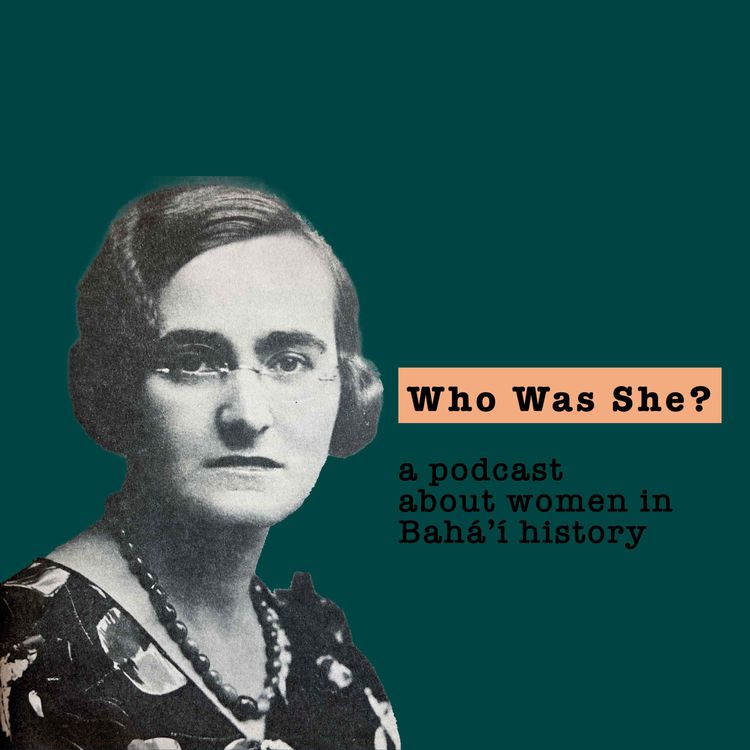
Who Was She?
She Who Hopes
The first episode on Lidia Zamenhof will focus on why and how her father invented the language Esperanto which would change not only her life but the world.
TRANSCRIPT:
Welcome to Who was she? Podcast. I am your host, Tara Jabbari. After a decade working in documentaries, marketing and all things digital media, I found that podcasting is a strong medium to share stories. After years of producing for others, I decided to start my own biographical podcast.
Who was she? Podcast will focus on the stories of women throughout history that were active in the Baha’i Faith. This season is about the life of Lidia Zamenhof, a woman who traveled through three continents between World War one and two to teach languages in an effort to bring unity to humankind. Using the biography, Lidia by Wendy Heller, learn about who made an impact in Lidia’s life and how she impacted others.
Her father was the inventor of the language Esperanto and like the language, Lidia won the hearts of many who encountered her despite numerous skeptics and biases.
In order to understand Lidia, you have to know more about her father Ludwick Zamenhof.
Esperanto began because Ludwick witnessed many challenges and he concluded that the language barrier was the most common reason for these challenges.
Ludwik Zamenhof was born in 1859 to Markus and Rozalia Zamenhof. He was the first of nine children and grew up in Bialystok, Lithuania. At the time, the town became a crossroads for people of diverse cultures and nationalities. Families from Russian, Polish, German and Jewish backgrounds all lived in the same area but kept to themselves, sticking to their own familiar languages and were suspicious of others. Based on the example set in the Old Testament’s Tower of Babel and from his own experiences, Ludwik believed the mistrust and confusion among the people were brought upon them because they did not speak the same language and would not learn each others. Since choosing one existing language would require people to agree that this was the superior language, he decided to create a whole new one that would make it easier for people to communicate and therefore unify.
When he was 15 years old, he began creating this new universal language and over the next several years, he shared with his brother and friends who began to learn it. As he progressed on the new language, his father, Markus, a professor of linguistics was worried. A few of his friends expressed concern to Markus that Ludwick was showing signs of insanity by trying to make a so-called universal language. Father and son butted heads until they reached a compromise. Ludwick would study medicine and postpone his work on creating a new language. In return, Markus would keep all of his work safely while Ludwick went to Moscow University. When he kept his end of the bargain, Ludwick asked his father for his notebooks but was heart broken to hear that Markus burned it all. Ludwick would have to work from scratch all over again. The result was a torn relationship between father and son that would take many years to heal.
Ludwick moved to Warsaw, Poland and eventually opened his own ophthalmology practice. In 1887, Ludwick married Klara Zilbernik. Klara’s family was very fond of Ludwick and his passion to create a universal language. Her father even agreed to use half the money from her dowry to allow Ludwik to publish the first book entirely written in the new language. The forty page book included translations of poems as well as a vocabulary of nine hundred words with a Russian translation. Ludwick signed his first book with a pseudonym, “Dr. Esepranto.” Esperanto means, “He who Hopes”
The book was a success and many people started to learn Esperanto. With the continued help and support of his in-laws, Ludwick was able to write another series of books translating the works of Shakespeare and parts of the Old Testament into Esperanto.
Ludwick and Klara’s family grew with the birth of Adam,in 1888 and Zofia, in 1889 and by 1903, with the popularity of Esperanto on the rise, they were expecting their third child. Count Leo Tolstoy received a copy of the first book and reported that he learned the language, quote, “after not more than two hours study”.
On January 29th 1904, Lidia was born. By 1905, the First International Congress of Esperantists was held in Boulogne-sur-Mer, France. These annual congresses would be a huge part of Lidia’s life growing up and would introduce her to other passions and purposes.
As the youngest child, Lidia’s siblings were considerably older than her and her parents were in their 40s. Both Adam and Zofia followed in their father’s footsteps and went to medical school. Lidia was homeschooled until the age of 10. Her parents taught her the importance of honesty and while she had a lot of their attention, they never spoiled her. Klara, her mother, described a 6 year old Lidia as a quote, “very able, bright and hard-working.”
Though The family lived on Dzika Street in the Jewish quarters of Warsaw but the family did not practice Judaism. Therefore, they were regarded with hostility by other Jews and because they were of Jewish background, they were still victims of anti-semits.
Ludwick in particular, wrote his wish that there was either no religion or one religion that all people belong to. He believed that language as well as religion were the great barriers for people to regard each other as friends and family.
But during the Esperanto Congresses, Lidia would witness unity for the first time and she observed how much respect and adoration people had for her father.
Over the years, there was a growing interest in Esperanto. In an interview with a progressive religious magazine, the Christian Commonwealth, the interviewer asked Dr. Zamenhoff his thoughts on how much the language spread and about a new religion, the Bahai Faith.
The Baha’i Faith started in Persia, what is now present day Iran in the mid 19th century. Its Prophet Founder, Baha’u’llah was exiled to Akka, Palestine, present day Israel. He wrote principles and laws to allow humanity to progress including the equality between men and women, elimination of prejudice and the concept of a universal language. The achievement of one universal language, He affirmed, would be the sign of the ‘coming of age of the human race.’
Baha’u’llah died in 1892 and His Family was still incarcerated in Akka until the fall of the Ottoman Empire. Now free, Abdu’l-Baha, Son of Baha’u’llah traveled throughout Europe and North America in the 1910s.
In February 1913, Abdu’l-Baha spoke about Esperanto in Paris which was reported in the Baha’i magazine, Star of the West. He said:
‘In the world of existence an international auxiliary language is the greatest bond to unite the people. Today the causes of differences in Europe are the diversities of language. We say, this man is a German, the other is an Italian, then we meet an Englishman and then again a Frenchman. Although they belong to the same race, yet language is the greatest barrier between them. Were a universal auxiliary language now in operation they would all be considered as one…
‘Now, praise be to God, that Dr. Zamenhof has invented the Esperanto language. It has all the potential qualities of becoming the international means of communication. All of us must be grateful and thankful to him for this noble effort, for in this way he has served his fellow-men well. He has invented a language which will bestow the greatest benefits on all people. With untiring effort and self sacrifice on the part of its devotees it will become universal. Therefore every one of us must study this language and spread it as far as possible so that day by day it may receive a broader recognition, be accepted by all nations and governments of the world and become a part of the curriculum in all the public schools. I hope that the language of all the future international conferences and congresses will become Esperanto so that all people may acquire only two languages - one their own tongue and the other the international auxiliary language. Then perfect union will be established between the people of the world.’
Abdu’l-Baha encouraged Baha’is all over the world to learn Esperanto. The interviewer from Christian Commonwealth asked Zamenhof his thoughts on Abdu’l-Baha’s recent talk, to which he replied: ‘I feel greatly interested in the Baha’i movement, as it is one of the great world-movement which, like our own, is insisting upon the brotherhood of mankind, and is calling on men to understand one another and to learn to love each other. The Baha’is will understand the internal idea of Esperanto better than most people. That idea is, “on the basis of a neutral language to break down the walls which divide men and accustom them to see in their neighbour a man and a brother”.’
Eventually Esperanto was taught in Persia and continued to grow in other countries.
As the years continued, Ludwick’s health declined. On April 14th, 1917, Dr. Zamenhof peacefully passed away in his home.
His family found some of his essays sprawled around his desk. One read: “I do not remember exactly in which year of my life I lost my religious faith, but I remember that I reached the highest degree of my unbelief at around the age of 15 or 16. That was also the most tormented period of my life. In my eyes, life lost all meaning and value...All seemed so senseless, useless, aimless, so absurd!
“I came to feel that perhaps [death is] not disappearance, perhaps death is a miracle...that something is guiding us for a high purpose…” He never finished the essay.
How did she cope with her father’s death? What happened to the Esperanto movement? We will find out in the next episode of Who was she?
You can also find more information on our Instagram, Facebook and Pinterest @whowasshe podcast. And please, rate and subscribe wherever you listen to this podcast. Logo was designed by Angela Musacchio. Music was composed and performed by Sam Redd. I am your host, Tara Jabbari.
More episodes
View all episodes
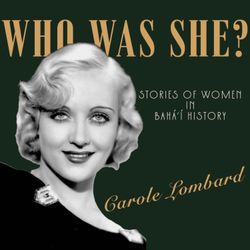
9. Bonus episode! BTS on Carole Lombard!
44:06||Season 4, Ep. 9A conversation with host Tara and her friend, Angie. Learn how this podcast season came about, the challenges, the creative process, and the people who helped make this season! We have a website! https://www.podpage.com/whowasshepodcast/You can also find more information on our social media:http://instagram.com/whowasshepodcasthttps://www.facebook.com/whowasshepodcasthttps://www.pinterest.com/whowasshepodcastOur music composer, Sam Redd is on SoundCloud as "Sam Redd": https://soundcloud.com/samreddand YouTube as @SammyManhattan: https://www.youtube.com/@sammymanhattanSubscribe on your favorite podcast platform: https://pod.link/1548368026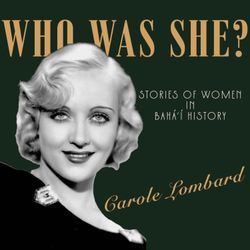
8. It's Been An Honor
18:49||Season 8, Ep. 8In our last episode of the season, we find out the challenges of Carole's love story with Clark Gable, her connections to some familiar names, her efforts to help during World War II, and her untimely death.We have a website! https://www.podpage.com/whowasshepodcast/You can also find more information on our social media:http://instagram.com/whowasshepodcasthttps://www.facebook.com/whowasshepodcasthttps://www.pinterest.com/whowasshepodcastOur music composer, Sam Redd is on SoundCloud as "Sam Redd": https://soundcloud.com/samreddand YouTube as @SammyManhattan: https://www.youtube.com/@sammymanhattanSubscribe on your favorite podcast platform: https://pod.link/1548368026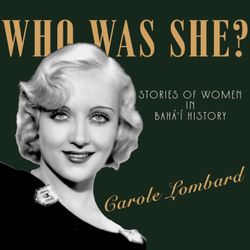
7. The Greatest Love Story
13:46||Season 4, Ep. 7How did Carole and Clark Gable finally become a couple? Why does "Gone with the Wind" have anything to do with it? Find out in the latest episode! We have a website! https://www.podpage.com/whowasshepodcast/You can also find more information on our social media:http://instagram.com/whowasshepodcasthttps://www.facebook.com/whowasshepodcasthttps://www.pinterest.com/whowasshepodcastOur music composer, Sam Redd is on SoundCloud as "Sam Redd": https://soundcloud.com/samreddand YouTube as @SammyManhattan: https://www.youtube.com/@sammymanhattanSubscribe on your favorite podcast platform: https://pod.link/1548368026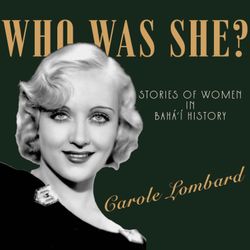
6. Her Greatest Heartbreak
08:09||Season 4, Ep. 6Two major deaths occur that impact Carole's life, which drives her to work harder in Hollywood. We have a website! https://www.podpage.com/whowasshepodcast/You can also find more information on our social media:http://instagram.com/whowasshepodcasthttps://www.facebook.com/whowasshepodcasthttps://www.pinterest.com/whowasshepodcastOur music composer, Sam Redd is on SoundCloud as "Sam Redd": https://soundcloud.com/samreddand YouTube as @SammyManhattan: https://www.youtube.com/@sammymanhattanSubscribe on your favorite podcast platform: https://pod.link/1548368026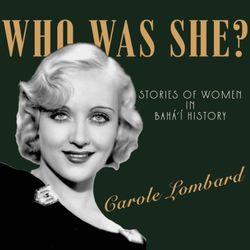
5. The Studios Trading Girl
11:45||Season 4, Ep. 5In this episode, Carole grows in her career, building her reputation as the comedic actress in Hollywood, working with major studios like Paramount and Columbia, making seven films back to back in one year, navigating a failing marriage, and much more!We have a website! https://www.podpage.com/whowasshepodcast/You can also find more information on our social media:http://instagram.com/whowasshepodcasthttps://www.facebook.com/whowasshepodcasthttps://www.pinterest.com/whowasshepodcastOur music composer, Sam Redd is on SoundCloud as "Sam Redd": https://soundcloud.com/samreddand YouTube as @SammyManhattan: https://www.youtube.com/@sammymanhattanSubscribe on your favorite podcast platform: https://pod.link/1548368026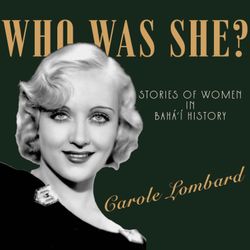
4. Mrs. Carole Powell
10:33||Season 4, Ep. 4Carole gets married, becomes the favorite client for the infamous talent agent, Myron Selznick, and holds her own against Harry Cohen, aka "The most hated man in Hollywood," plus much more! We have a website! https://www.podpage.com/whowasshepodcast/You can also find more information on our social media:http://instagram.com/whowasshepodcasthttps://www.facebook.com/whowasshepodcasthttps://www.pinterest.com/whowasshepodcastOur music composer, Sam Redd is on SoundCloud as "Sam Redd": https://soundcloud.com/samreddand YouTube as @SammyManhattan: https://www.youtube.com/@sammymanhattanSubscribe on your favorite podcast platform: https://pod.link/1548368026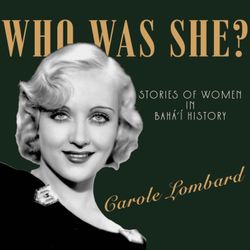
3. The Orchid Lady
07:06||Season 4, Ep. 3In the third episode of this new season, we follow Lombard's transformation from a struggling actress to becoming Paramount Pictures' "Orchid," how she earned the respect of Hollywood, and more! We have a website! https://www.podpage.com/whowasshepodcast/You can also find more information on our social media:http://instagram.com/whowasshepodcasthttps://www.facebook.com/whowasshepodcasthttps://www.pinterest.com/whowasshepodcastOur music composer, Sam Redd is on SoundCloud as "Sam Redd": https://soundcloud.com/samreddand YouTube as @SammyManhattan: https://www.youtube.com/@sammymanhattanSubscribe on your favorite podcast platform: https://pod.link/1548368026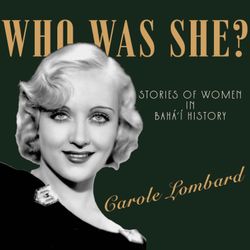
2. Introducing Carol Lombard
18:11||Season 4, Ep. 2This season is about one of Hollywood's first starlets, Carole Lombard and in this second episode, we learn about how she went from Jane Peters to her new screen name, Carol (without the e) Lombard, auditioning and avoiding the infamous 'casting couch' with Charlie Chaplin and John Barrymore, the car crash that nearly ended her career, and more!We have a website! https://www.podpage.com/whowasshepodcast/You can also find more information on our social media:http://instagram.com/whowasshepodcasthttps://www.facebook.com/whowasshepodcasthttps://www.pinterest.com/whowasshepodcastOur music composer, Sam Redd is on SoundCloud as "Sam Redd": https://soundcloud.com/samreddand YouTube as @SammyManhattan: https://www.youtube.com/@sammymanhattan Subscribe on your favorite podcast platform: https://pod.link/1548368026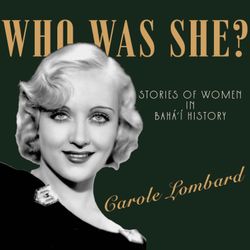
1. Who was Jane Peters?
10:32||Season 4, Ep. 1Welcome to Who was she? Podcast where your host, Tara Jabbari focuses on the stories of women throughout history that were active in the Baha’i Faith. This season is about one of Hollywood's first starlets, Carole Lombard.This first episode shares the story of her early beginnings from Indiana to what led to her family moving to Los Angeles. We have a website! https://www.podpage.com/whowasshepodcast/ You can also find more information on our social media:http://instagram.com/whowasshepodcasthttps://www.facebook.com/whowasshepodcasthttps://www.pinterest.com/whowasshepodcastSubscribe on your favorite podcast platform: https://pod.link/1548368026